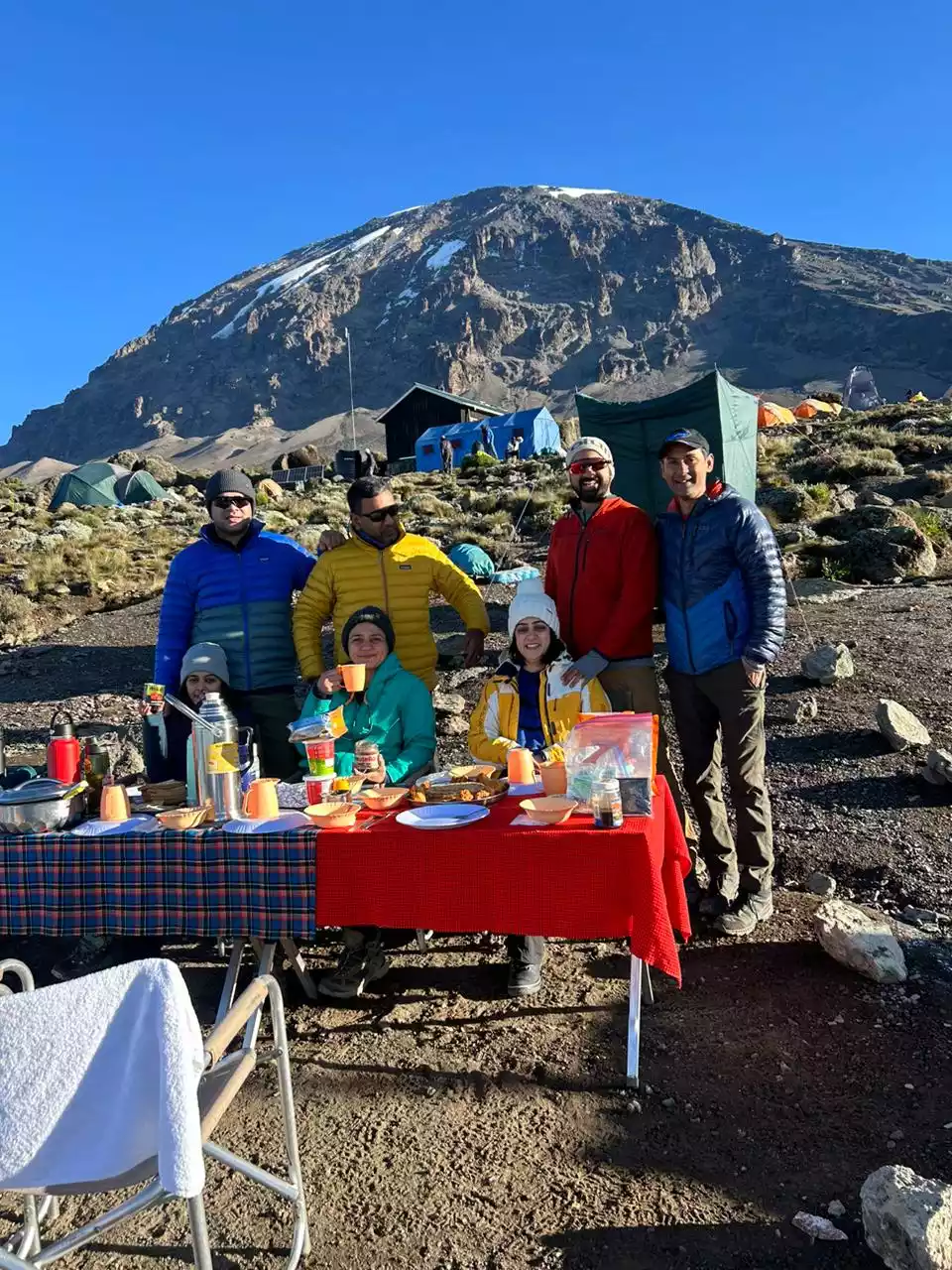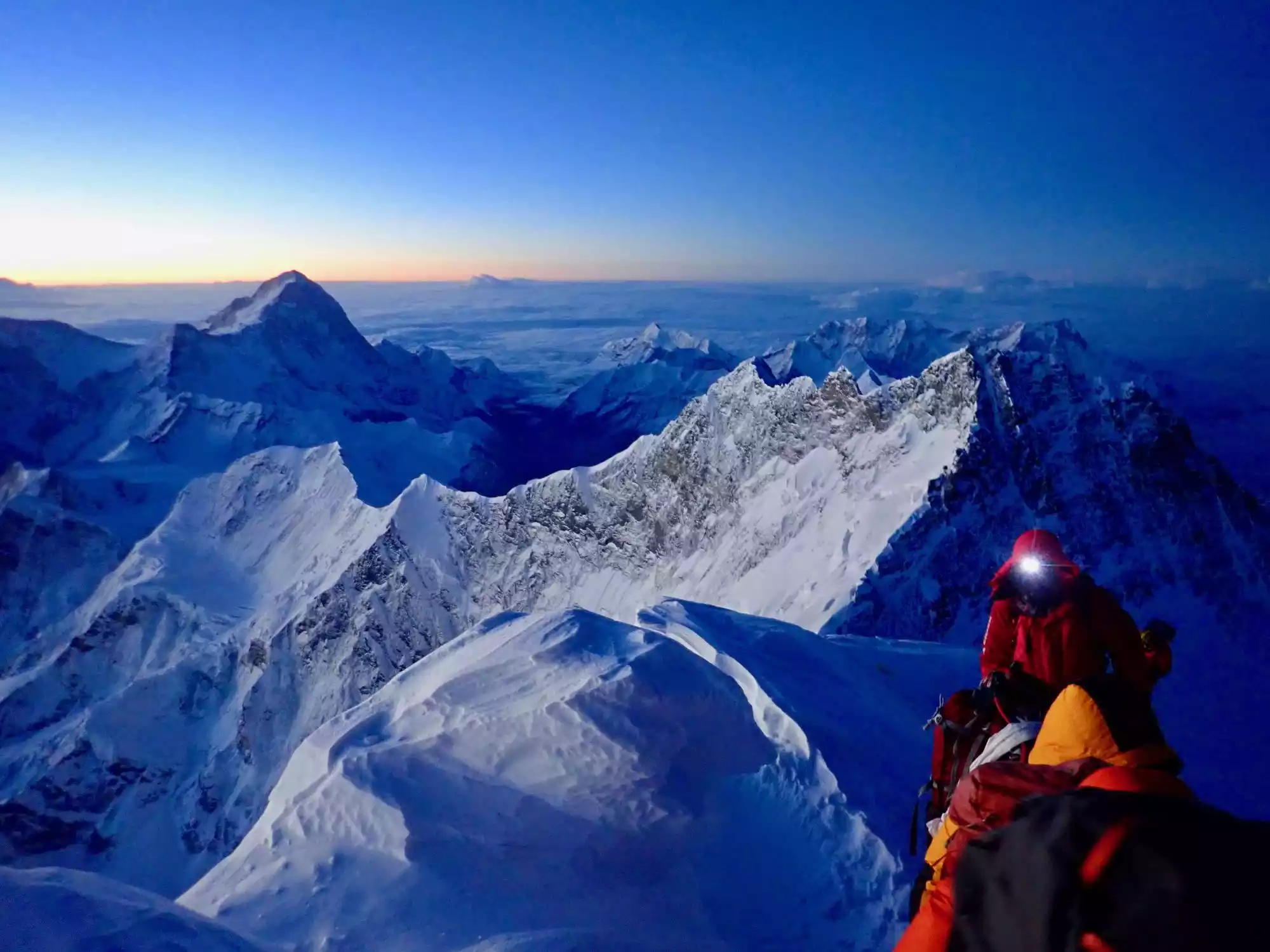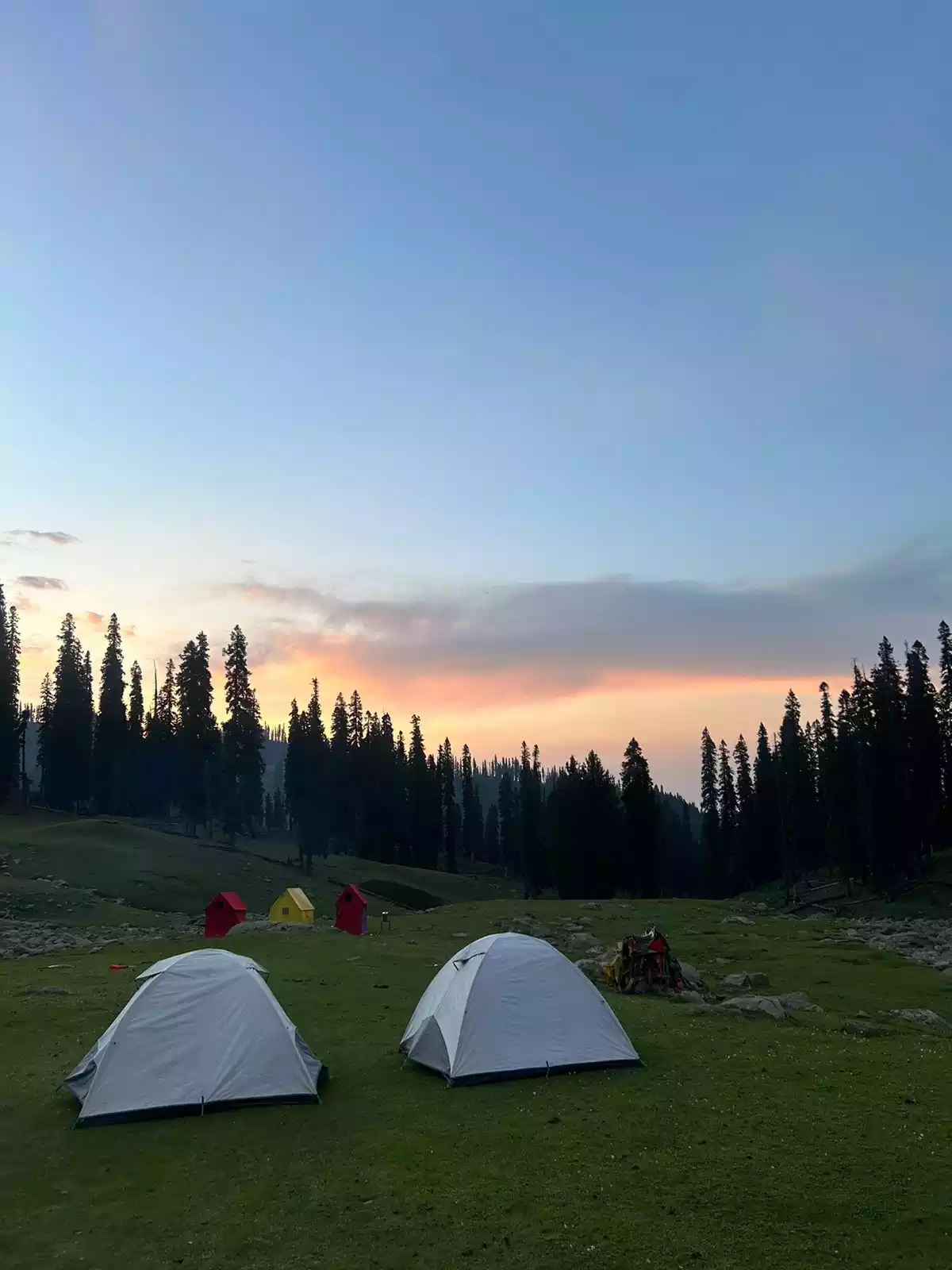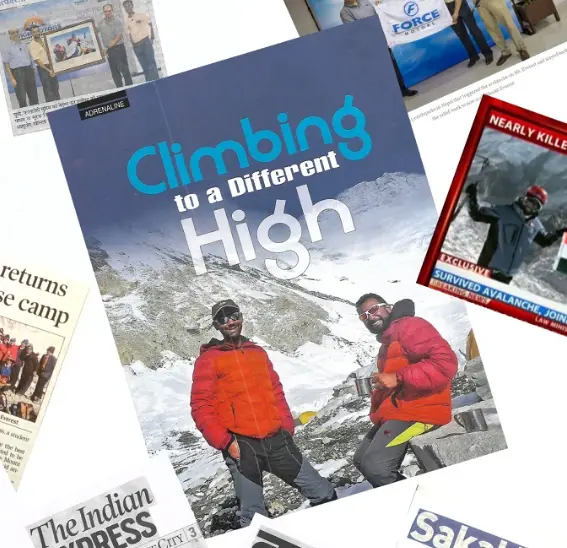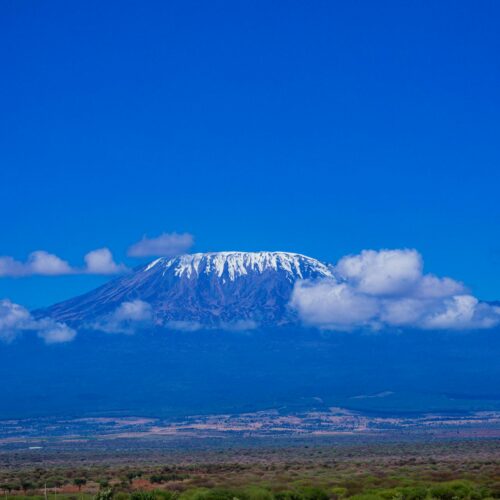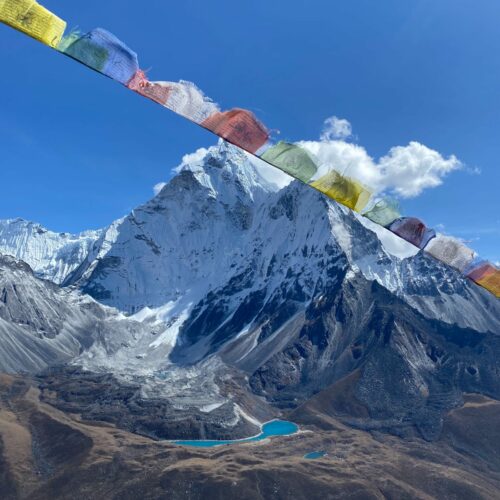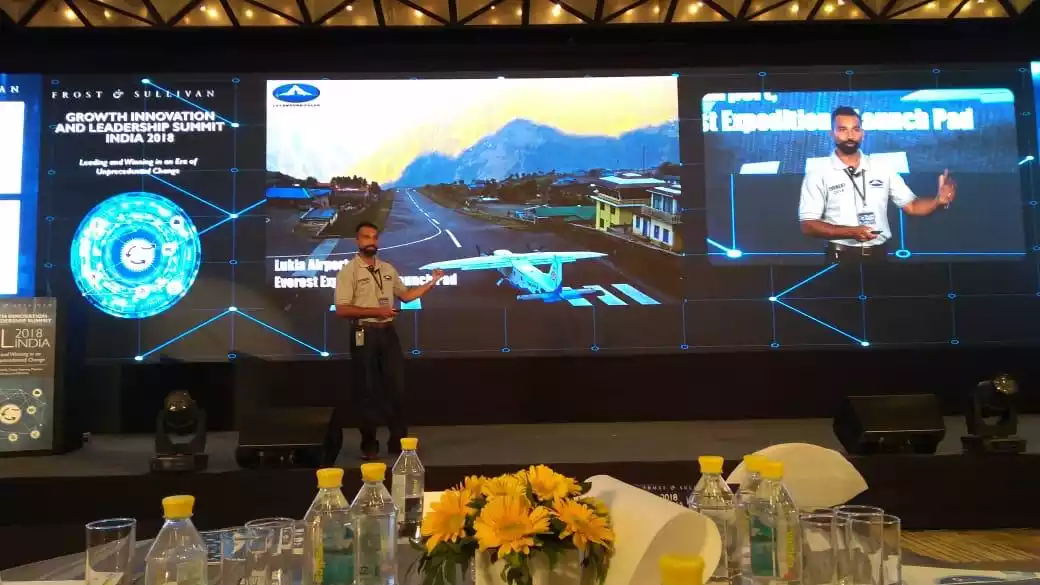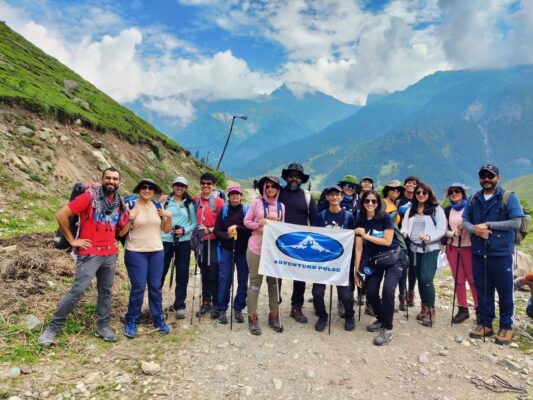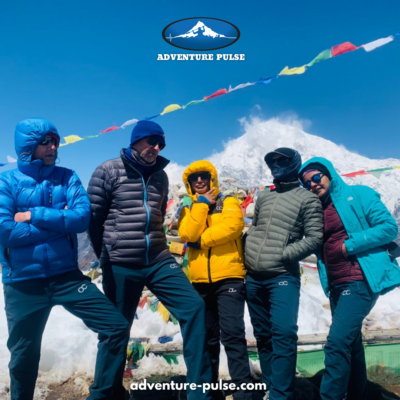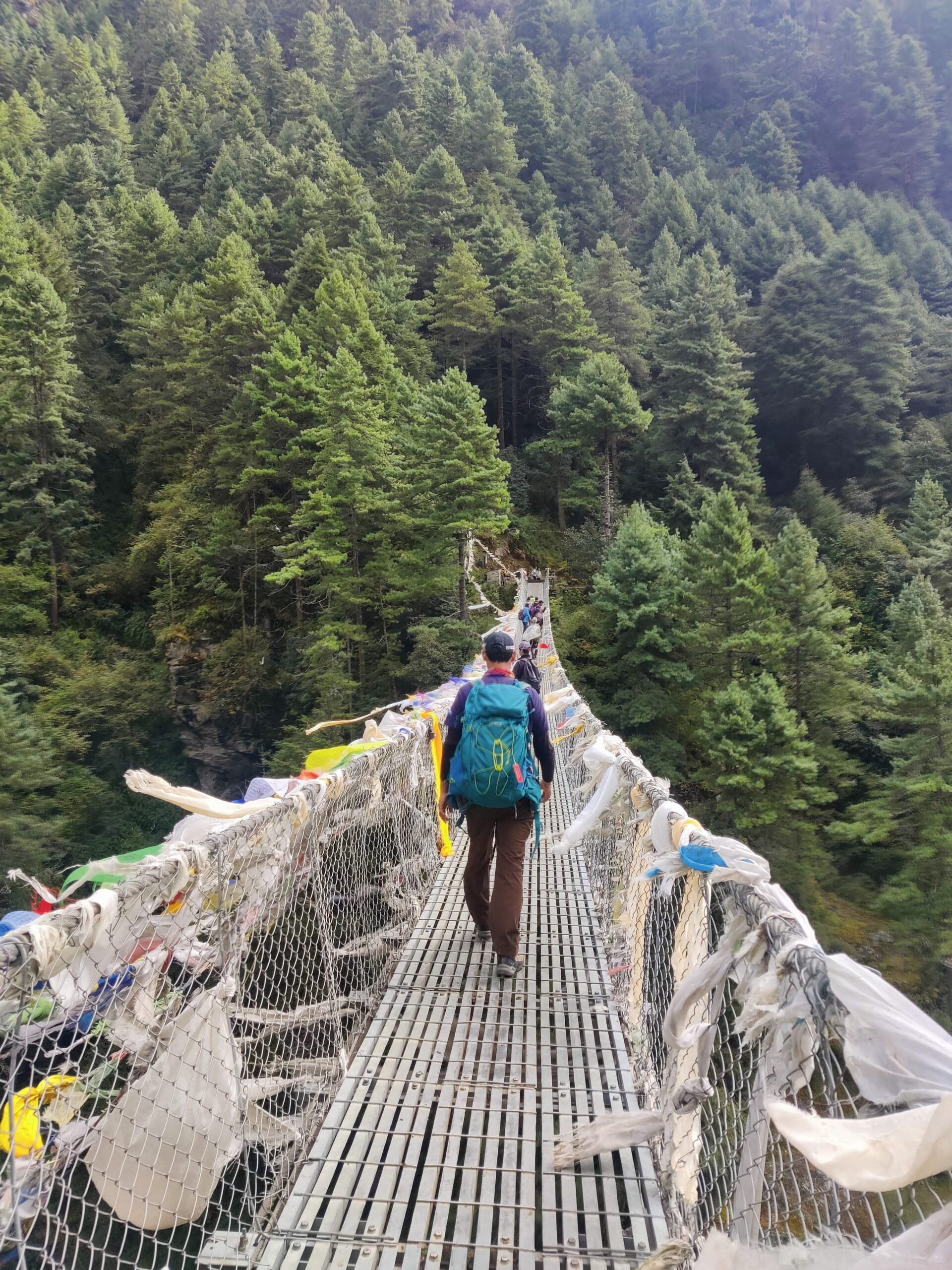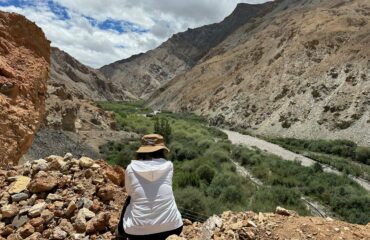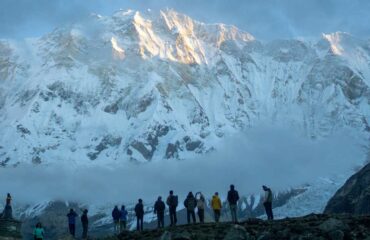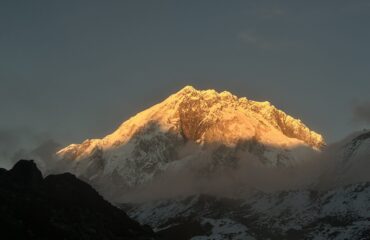
When you first look at Mount Kilimanjaro, standing high above the plains of Tanzania, it’s easy to understand why it’s referred to as the Roof of Africa. With Mount Kilimanjaro height at 5895 meters, this dormant volcano is the highest freestanding mountain in the world. And that’s why Mount Kilimanjaro Trek is famous among adventure seekers.
The top of the mountain has a blanket of snow, which appears to be the source of Kilimanjaro meaning. Its name comes from a combination of the Swahili word ‘Kilima’, meaning “Mountain”; and the KiChagga word ‘Njaro’, for ‘Whiteness’. The origin story of this incredible mountain, Mount Kilimanjaro has been born and moulded by the forces of ‘Fire & Ice’, through the age of time.

One of the most asked questions is, “Where is Mount Kilimanjaro located?” Though close to the border of Kenya, Mount Kilimanjaro falls completely in Tanzania. It is approximately 300 kilometers south of the equator. In earlier years, the closest airport to the mountain was Dar-es-Salaam. It is also the capital of Tanzania.
You then had to take a long bus journey of 11 hours to reach the base town of Moshi. It is located at the foot of Mount Kilimanjaro. The city of Arusha 2 hours further away, was also a popular launch pad for expeditions. Because of its & popularity with Safari expeditions, resources were more accessible from Arusha.
Today, life is a lot easier. Kilimanjaro International Airport, only 60 kilometers away, is the closest access to the mountain. From here, you can choose between Arusha or Moshi from where to begin your Mount Kilimanjaro trek.
How much does it cost in climbing Mount Kilimanjaro?
Climbing Mount Kilimanjaro is not a cheap proposition. Earlier, individuals could hitchhike or backpack to the national park and then begin their expedition to the Kilimanjaro summit. But that changed. In 1991, the park authorities made it compulsory to arrange a Mount Kilimanjaro trek through a licensed agency. They also insist that all trekkers have a guide supplied by the agency. Even after these laws, trekkers tried to sneak in without paying. There were many climbers who managed the Mount Kilimanjaro trek without permits. They faced not only the elements but also the wrath of park rangers. Not only these acts were detrimental to the economy, but also harmful to the ecological protection of this rare habitat.
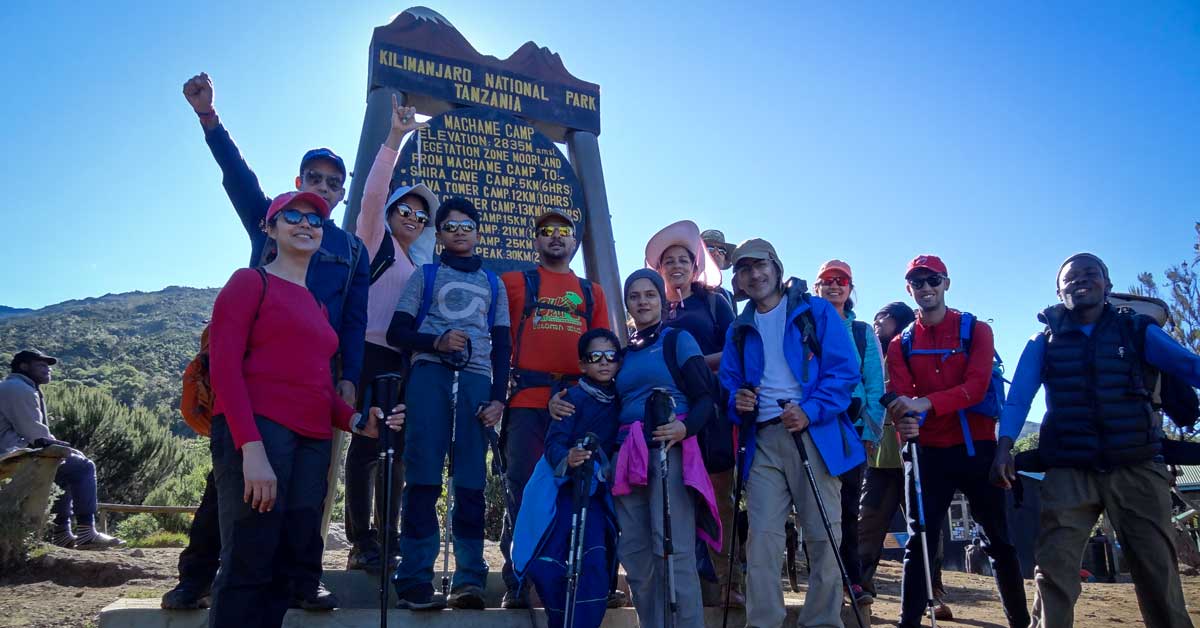
Fortunately, the authorities have tightened up security and clamped down on non-payees, so these tedious tales are few. This has become one of the primary mandates of the Kilimanjaro National Park; to discourage freeloaders and channel the fees towards its ecological conservation. Indeed, equating freeloading to stealing is not too strong a word, especially when in one of the poorest countries in the world. Yes, climbing Kilimanjaro is expensive. But, the costs of maintaining a mountain this big are high. Your Kilimanjaro expedition can start from USD 1700 with some of the budget operators. It can even go as high as USD 11,000 with the premium agencies based in the US and UK.
Though it is possible to land in Arusha and get permits & supplies, it is much better to plan your expedition logistics well in advance. Once you reach Tanzania, your attention should be on the climbing challenges ahead, while climbing Mount Kilimanjaro. Dealing with the standard delays and lengthy discussions required to hasten the usual sedentary pace, here in Africa can be extremely cumbersome.
How long does it take to climb Mount Kilimanjaro?
Based on your fitness and prior experience, the Mount Kilimanjaro trek can take up to 9 days on the higher side and as few as 5 days. Though your budget will determine the number of trekking days. It’s important to remember that by saving money, you do not end up compromising your safety or the chances of reaching the Kilimanjaro Summit. I recommend a 7-day itinerary with 6 nights spent on the mountain. Though it is possible to do it in less time, the probability of success becomes less.

Having spent the last 6 years climbing Mount Kilimanjaro I recommend, the Machame Route spanning over 7 Days & 6 nights. This specific combination of Machame Route and the number of days has proved to be the most economical and effective approach to reaching the Kilimanjaro peak. This is one of the best routes to climb Mount Kilimanjaro as the trail helps in proper acclimatization. Popularly referred to as the Whisky Route, you end up going up and down, spending 3 nights under 4000 meters. This enforces the ‘Climb High, Sleep Low’, the protocol for acclimatization which reduces chances of AMS (Acute Mountaineering Sickness).
The Machame route
The Machame route on your Mount Kilimanjaro trek takes you through some of the most beautiful features, this mountain has to offer. As you make your way up from the Machame Gate, the trail takes you into the cloud forests of Mount Kilimanjaro’s southern slopes. You climb out of the forest and arrive on the dusty barren surface of Shira plateau. You then descend into the Barranco gorge with its incredible beauty.
Finally, you go up the Barafu trail, past the Rebmann Glacier reaching the rim of the crater at Stella Point, a few 100 meters short of Uhuru Peak at sunrise. As climbers understand the beauty of this route, it has become one of the most popular routes for climbing Mount Kilimanjaro. In peak season the park authorities record almost 150 trekkers per day at the Machame Gate, the starting point of the route. They have now introduced a new mandate to reduce the number of trekkers to 100 per day.
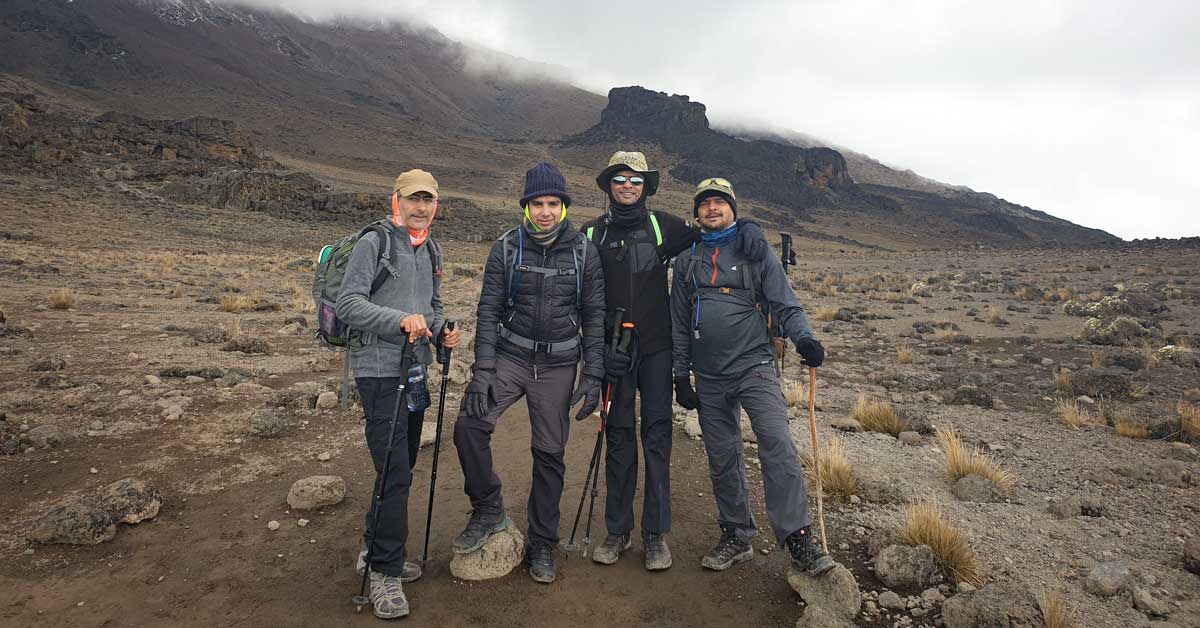
A total itinerary of 10 days should be ideal for Kilimanjaro. One day to travel to Arusha or Moshi with the next day to recover from jetlag. The next seven days spent on the mountain and finally on the 10th day, you can catch your flight out of Africa. The Kilimanjaro National Park is open throughout the year and so it is possible to plan your trek at any time. But, in my experience, the best time to visit is in July, August and September, often considered the dry season. Even then, Mount Kilimanjaro is notorious for creating its weather patterns. So be prepared to encounter rains and high winds on your trek, especially near the Kilimanjaro summit.
How difficult is Mount Kilimanjaro Trek?
Climbing Mount Kilimanjaro is a battle between you and the elements. It requires good physical fitness, endurance, and mental determination. Your expedition is made up of three challenges, the first being the terrain & gradient of the trek. This challenges your body to adapt to the changing environment and altitude or fall sick in the process.
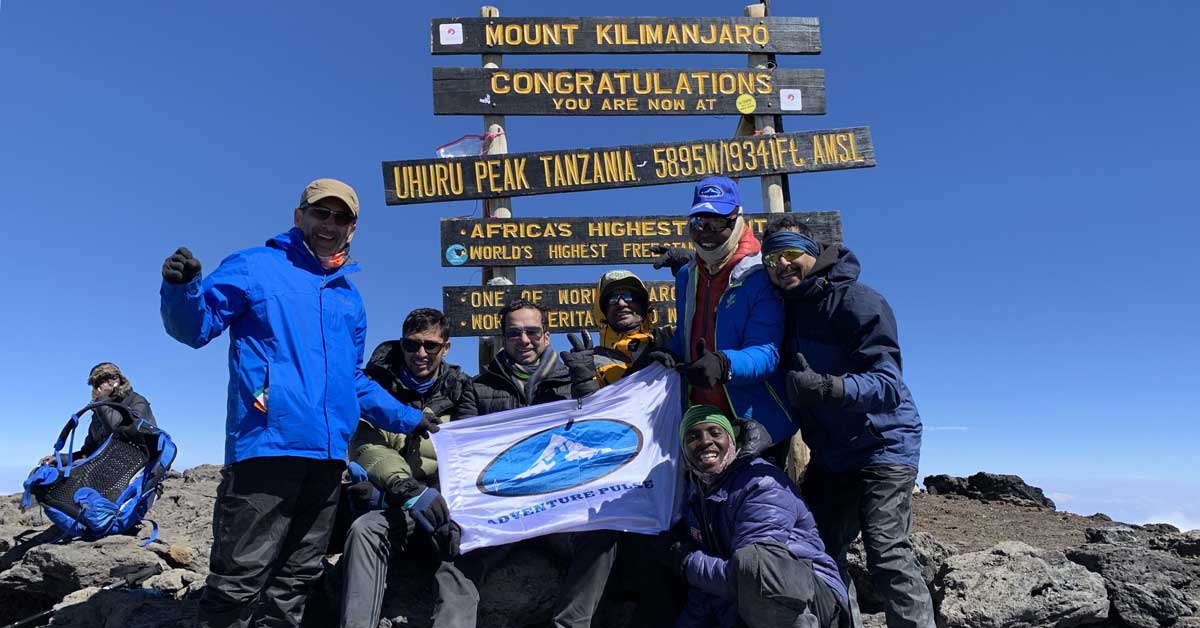
The second big challenge is the comfort, or more aptly ‘Dis-comfort’ of camp life. Sleeping in a tent, using basic toilets, and leading camp life does need some getting used to. Though the team and staff try their level best to ensure your well-being, you need to have a good night’s sleep, or the next day becomes all the more challenging.
Finally, the last main challenge is the actual night climb to the summit. This requires sheer mental determination and also the will to push through the entire night. Fighting sleep and the cold, you aim to reach the summit of Uhuru Peak at sunrise.
Physical Fitness for Mount Kilimanjaro Trek
After understanding these challenges, you can see why it is important to be in good physical condition. Fitness for your Mount Kilimanjaro trek should start at least 3 months before the expedition. It should be a combination of cardiovascular exercises such as running or trail walking, as well as strength training. I even suggest cardio regulatory exercises such as Yoga or swimming. This forces you to train to keep in mind your breathing. At the end of the day, your hard work & preparation will increase your chance of reaching the Kilimanjaro summit.
The best age for climbing Mount Kilimanjaro
Though the official minimum age to enter the national park is 10 years, there is no maximum age. It is important to keep in mind existing physical and medical conditions, specific to your age, that can prove detrimental to your health. If a child, for instance, cannot communicate the difficulties he or she is facing, it becomes very difficult to interpret the symptoms of AMS. For older climbers, arthritis and joint-related problems can get aggravated on the steep sections of the trail.
I often encourage trekkers to have a full medical checkup done, to ensure that they are healthy. This also acts as a source of mental reassurance both for the climber as well as for the organizers.
What to do after climbing Kilimanjaro?
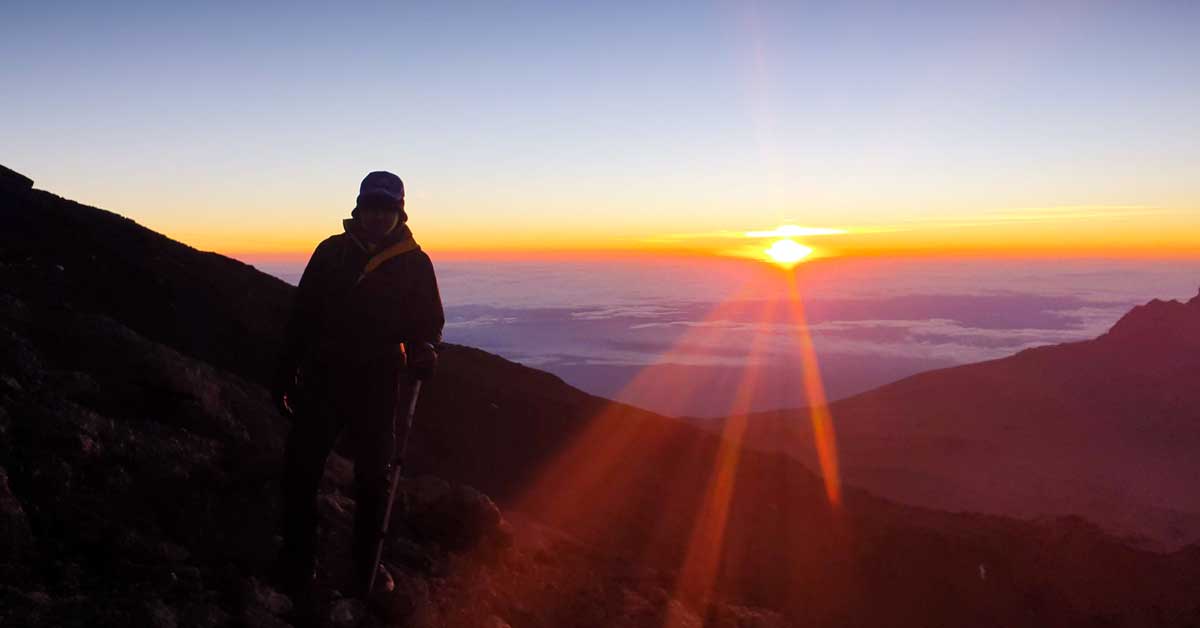
Once you have established your credentials after climbing Mount Kilimanjaro, What Next? I recommend the highest peak in Europe, Mt Elbrus. Though the height of Mt Elbrus is 5642 meters (less than Kilimanjaro), climbing in snow conditions can be a very challenging and whole new experience.
After all, you have stood on Uhuru Peak, Kilimanjaro Summit and taken a big stride forward. The highest points above sea level on each of the seven continents has now become a hallmark, which a few elite individuals have achieved. They refer to it as the ‘Seven Summits Club’. You too can aspire to be part of this achievement through your determination. And who knows, maybe one day, the highest mountain in the World…

